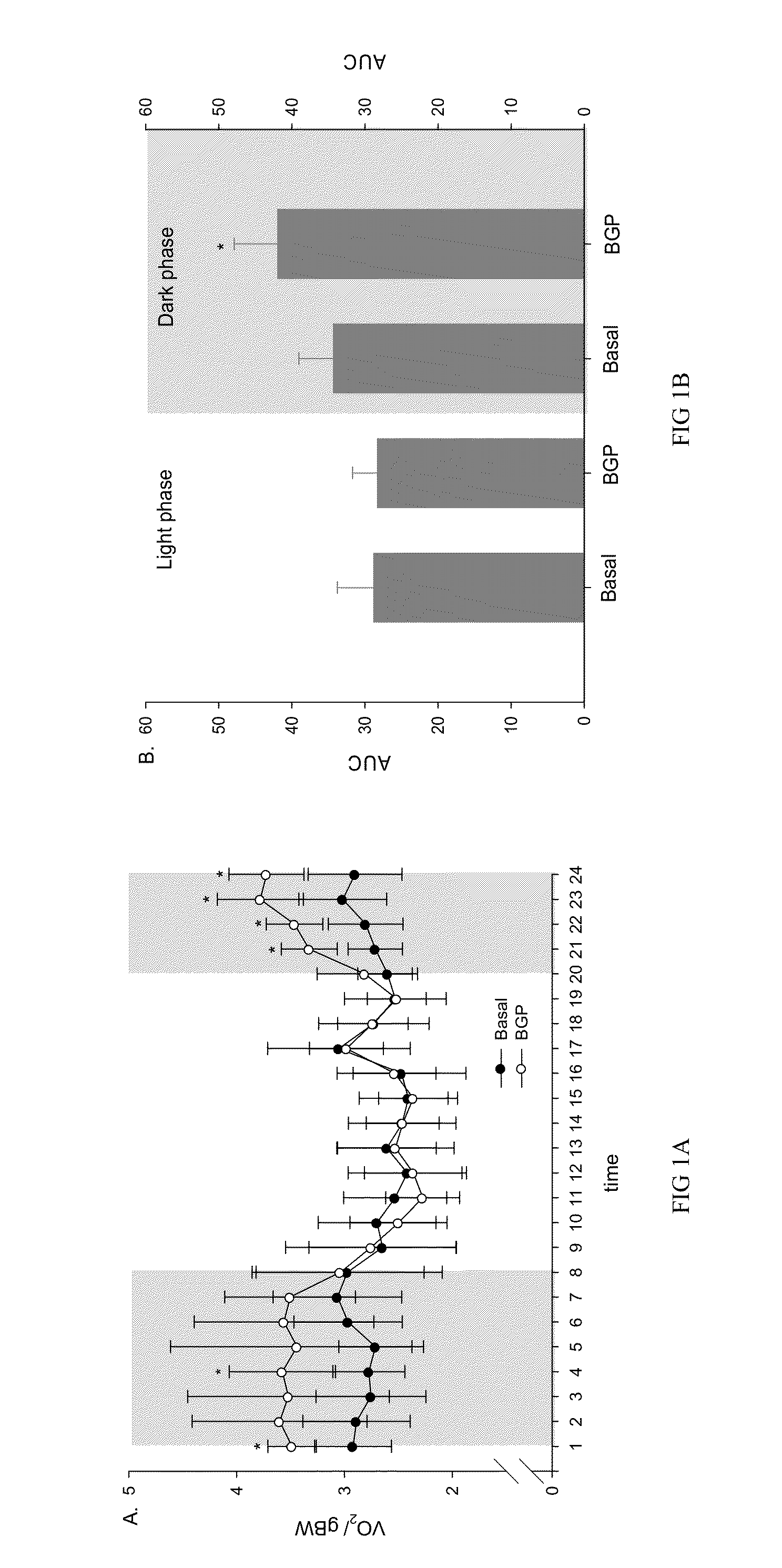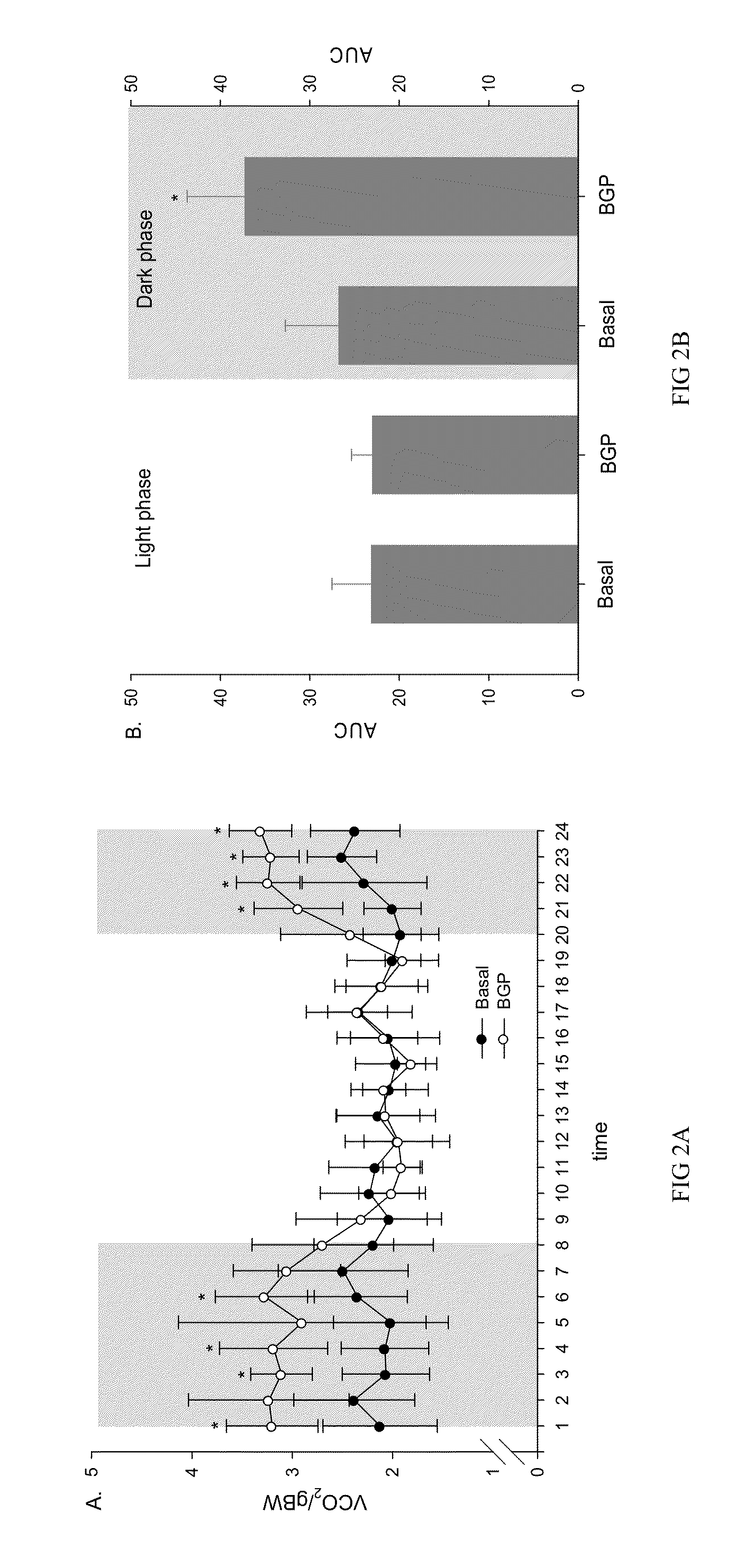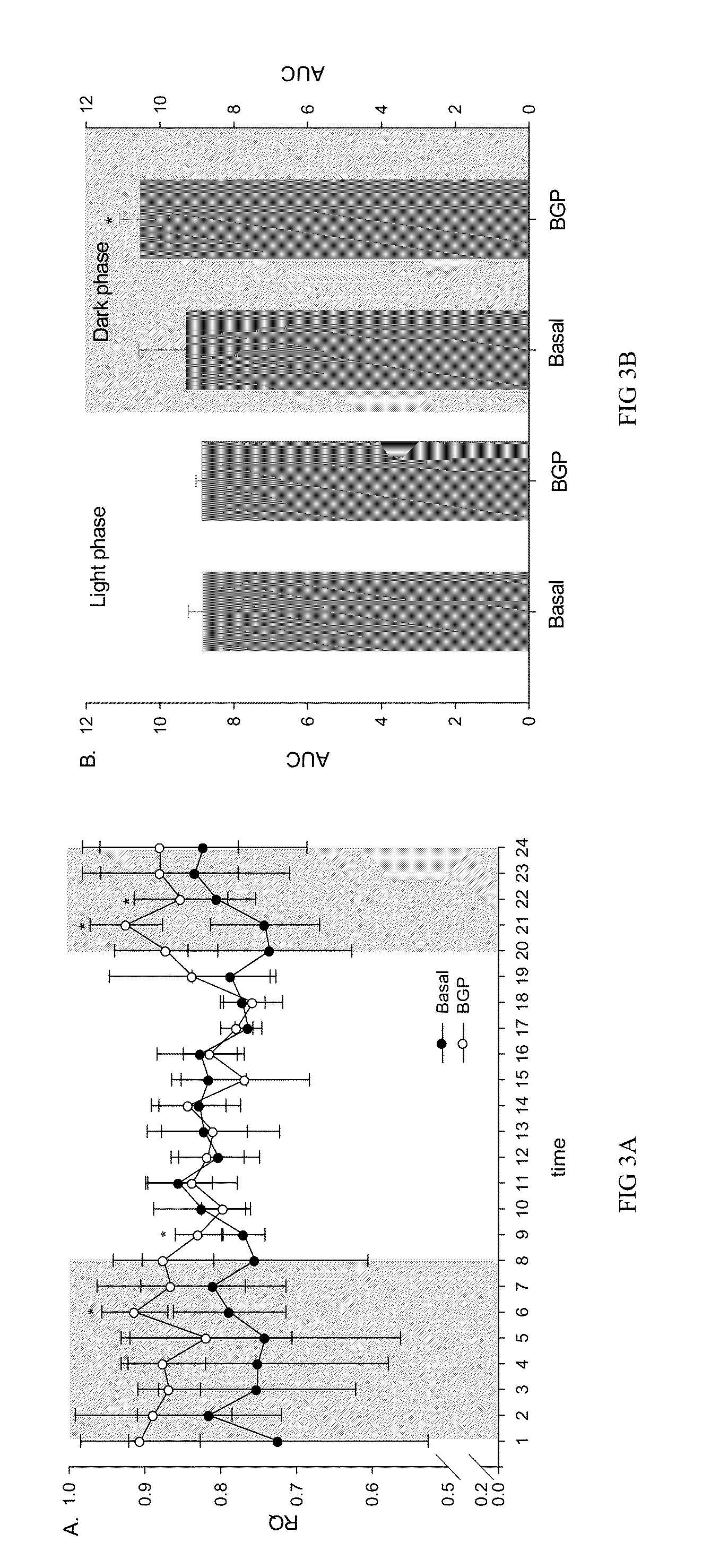Mitochondria regulator composition
a technology of mitochondria and composition, which is applied in the field of cell regulators, can solve the problems that bitter gourds have never been reported in the regulation of mitochondria, and the mitochondria in brown adipose tissue is not designed to produce atp, so as to improve the production of energy and heat, and the ability to regulate biosynthesis. significant
- Summary
- Abstract
- Description
- Claims
- Application Information
AI Technical Summary
Benefits of technology
Problems solved by technology
Method used
Image
Examples
example 1
Diet Formulation of Bitter Gourd and Animal Study
[0035]Fresh wild bitter gourd (Cultivar Hualian No. 4) fruits were provided by Hualien District Agricultural Research and Extension Station of Taiwan. This cultivar was specifically bred based on a high PPAR activating activity. Whole fruits (included seeds) were washed, sliced, frozen and lyophilized. They were then grounded to produce the bitter gourd powder (BGP) sample and stored at −20° C. for making the BGP test diet.
[0036]Twelve eight-week old male C57BL / 6J mice for animal studies were purchased from the National Laboratory Animal Center (Taipei, Taiwan). Mice were acclimatized for 4 weeks and fed a non-purified diet (Rodent Chow, PMI Nutrition International, Brentwood, Mo. USA) before the experiment. After acclimation, mice were randomly assigned into two groups. The control group (n=6) was fed AIN-93 modified basal diet wherein carbohydrate sources were provided by 50% sucrose (abbreviated as basal group), while the experimen...
example 2
Oxygen Consumption, Carbon Dioxide Production, and Respiratory Quotient Measurement (Metabolic Chamber Study)
[0039]The mice of the example 1 were fed with experimental diet for 5 weeks. The mice were then acclimatized in Oxymax System metabolic chambers (AccuScan Instruments, Inc. Columbus, Ohio USA) for 6 days with free access to the respective diet and water in an animal room kept on a 12 hour light and 12 hour dark cycle (light phase 8:00-20:00; dark phase 20:00-8:00) until steady. After acclimatization, data of the O2 consumption and CO2 production of the mice were automatically monitored and recorded for 24 hours on day 7 and the results were expressed as per gram body weight. The respiratory quotients (RQ) were also calculated as VCO2 / VO2.
[0040]The results showed that the experimental group (the BGP group) at different time point of dark phase (20:00-8:00) showed significant increase of oxygen consumption (FIG. 1A) and CO2 production (FIG. 2A, p2 production (FIG. 2B, p2 was fu...
example 3
[0042]At the end of 22 week of feeding, mice were feed-deprived at 3 AM in the morning for 16 hours, weigh of body weight and then sacrificed by CO2 asphyxiation. Excise and collect about 0.1 gram of epididymal white adipose tissue (abbreviated as EWAT), gastrocnemius muscle white adipose tissue and intra scapular brown adipose tissue in sterile 1.5 mL centrifuge tube or foil, then weighed and immediately frozen in liquid nitrogen, and then stored at −80° C. until gene expression analysis.
[0043]The mRNA expression of the following genes in epididymal white adipose tissue, brown adipose tissue (abbreviated as BAT) or muscle cells were analyzed, including PPARα (SEQ ID NO:1), PPARγ (SEQ ID NO:2), PPARδ (SEQ ID NO:3), and PGC1α (SEQ ID NO:4) genes; fatty acid oxidation related genes: CPT1a (SEQ ID NO:5), CPT1b (SEQ ID NO:6), ACD1 (SEQ ID NO:7), and ACS1 (SEQ ID NO:8); adaptive heat generation related gene: uncoupling protein 1 (UCP1 (SEQ ID NO:9)); cholesterol m...
PUM
 Login to View More
Login to View More Abstract
Description
Claims
Application Information
 Login to View More
Login to View More - R&D
- Intellectual Property
- Life Sciences
- Materials
- Tech Scout
- Unparalleled Data Quality
- Higher Quality Content
- 60% Fewer Hallucinations
Browse by: Latest US Patents, China's latest patents, Technical Efficacy Thesaurus, Application Domain, Technology Topic, Popular Technical Reports.
© 2025 PatSnap. All rights reserved.Legal|Privacy policy|Modern Slavery Act Transparency Statement|Sitemap|About US| Contact US: help@patsnap.com



